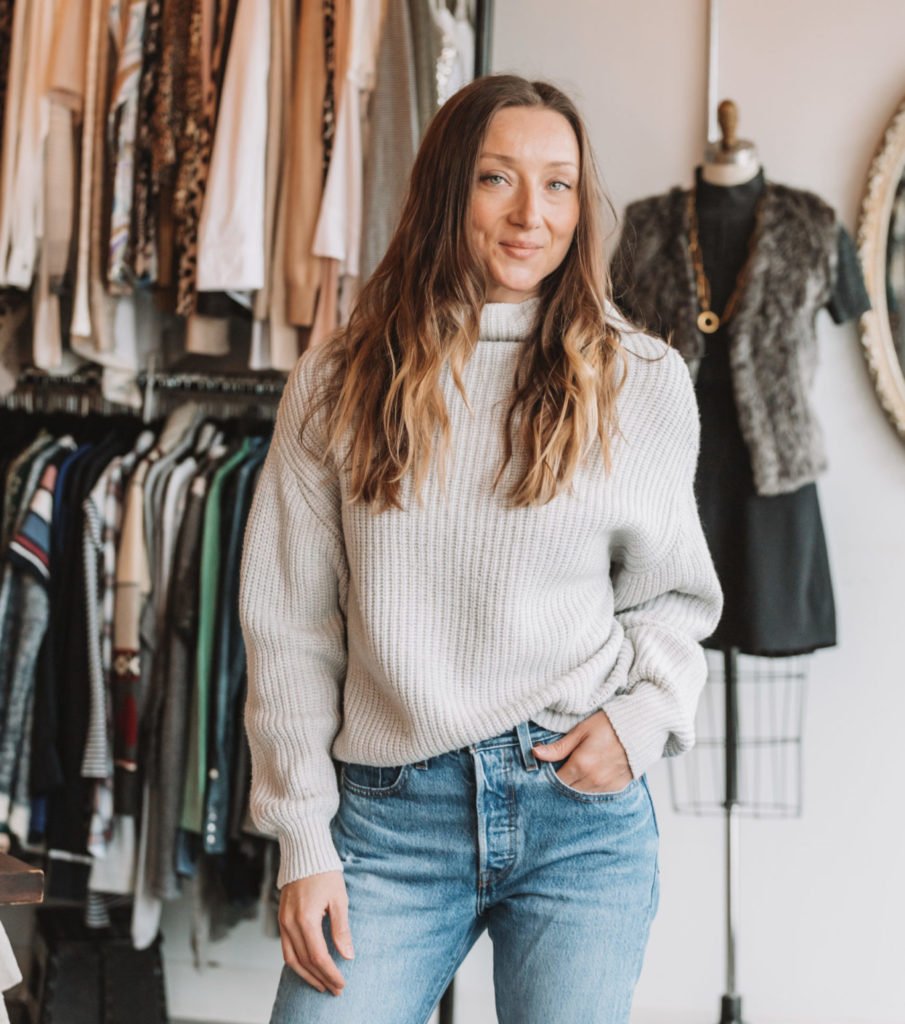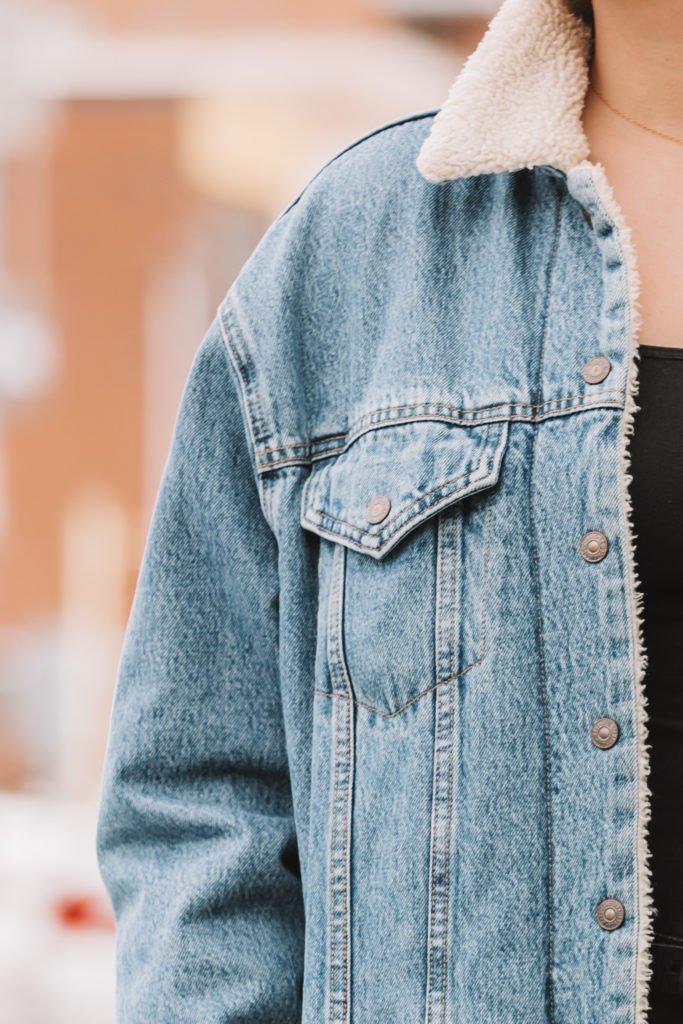Tips for mastering second-hand shopping
Second-hand shopping is fun, sustainable, and can add unique pieces to your closet. That being said, second-hand shopping can be totally overwhelming if you don’t know what to look for. We put together these tips to help you get the most out of your shopping trips and to help you fall in love with the adventure.
1. Sell before you buy
Our favourite tip comes from Queer Eye’s Tan France’s Master Class. Taking the time to sort through what you have, remove clutter, and make some extra spending money will help you identify what you need and make space in your closet (and wallet) for those pieces.
2. Know your second-hand shops
When shopping for second-hand clothing, you will come across a few different types of stores. You have charity thrift stores (think St. Vincent De Paul or Salvation Army), your commercial thrift stores (Value Village), vintage stores, online sellers, and consignment stores. Each of these stores will offer you a different shopping experience and come with pro’s and con’s. By knowing what you’re shopping for, your treasure-hunt mindset, and your budget, you can plan your shopping trip around the type of shop that suits your needs.
Thrift Stores
Shopping at thrift stores can be a treasure hunt. Be prepared to sift through a lot of clothing before finding anything you wish to try on. That being said, when you score a piece you are likely to pay less. At thrift stores, it’s especially important to inspect all clothing for imperfections: stains, rips, holes, broken zippers. Charity thrift stores are likely to price everything equally but commercial thrift stores now markup designer and name brand items.
Vintage Stores
Vintage stores typically only carry vintage clothing. Unlike thrift shops, you are unlikely to find modern second-hand clothing, but instead more clothing from past decades - many vintage clothing stores will not sell clothing from the 90s and earlier. Keep in mind that the more curated a shop is, the more expensive you can expect it to be.
Online second-hand sellers
There has been an enormous increase of online used-clothing sellers in the past few years. These range from online vintage shops, to services like Depop and thredUP where people can sell their own clothes. While you can definitely score on these sites - remember that most used-clothing stores (online and bricks and mortar) don’t usually allow returns, so to mitigate risk, purchase from trusted stores and brands you know well.
Consignment stores
Consignment stores sell clothing on behalf of a consignor and take a portion of the profit (you can read more on that here). You can expect a more curated selection of clothing both modern and vintage, however, consignment stores can vary greatly. So get to know the consignment stores in your area, what they specialize in and what you can expect from your visit. We may be biased, but shopping at a consignment store is a great and easy way to shop for second-hand clothing. You save yourself the time and effort of sifting through thousands of pieces, items are inspected for imperfections before making it on the shelf, you can find both modern and vintage clothing, and you can consign your own clothes and earn some money.
3. Know when the shops restock and keep an eye on sales
Knowing when shops restock is like having pick of the litter. If you get into the habit of going regularly, your visit will be quick and efficient since you will know what you have seen and what is new. Some shops have sales which can be a great time to get some items for less. Trove hosts a twice annual 50% off sale in the summer and winter. Vintage stores and thrift stores often have “kilo sales”, which offers a flat rate on as many items as you can fit into a bag. But remember, when shopping second-hand, the things you see are essentially one-of-a-kind. If you fall in love with something, don’t take the risk of waiting for a sale.
4. Dress comfortably in easy-on, easy-off, and easy-to-layer clothing
This textbook tip is true for any kind of shopping but especially for shopping days where you will need to try on a lot of clothes. Easy-on, easy-off clothes like jeans and a t-shirt are great as they will not deter you from heading for the change rooms. We recommend wearing separates so you can try on bottoms and tops and know what they will look like with pieces from your own closet.
5. Be in the right mind set.
Second-hand shopping can be overwhelming. It’s a lot of sifting, trying on, and decision-making. If you’re not up for it you can burn out quickly and become frustrated. Find a day where you’re excited for the hunt and bring a friend who loves shopping.
6. Know what you have, what you’re shopping for, and what will bring you joy!
It is always a good idea to shop with intention. Know what you have in your closet and where there are holes. Make a list of things you are shopping for but keep an open mind. You never know what you might find so knowing what you have is a great way to know if a fun piece will complement what you have or if it’s just the lust and magic of vintage shopping.
7. Try. Everything. On.
If something catches your eye - grab it! Look through every section of the shop and pay little attention to the sizes. Sizes vary over the years - what was a size 8 in 1960 may fit a modern size 4. Different designers and brands have different standard sizing charts. As trends, styles, and fit preferences change the size on the label becomes more obsolete. If you see something you like, hold it up and assess the size (ignoring what is listed on the label). Give it a try and you may be surprised!
8. Know what can be tailored and what is not worth the effort.
When you find something that is a great price, great composition of fabric, and totally speaks to you but the fit is not quite perfect - consider having it tailored. The caveat to this tip is knowing what can be tailored and what is simply not worth the effort. Such things like taking in a blouse or dress, sewing on a button, or adding darts are economical ways for a tailor to customize something for your body. Other things are tricky, expensive, but doable and should be reserved for extra special pieces. This can be altering heavier fabrics, such as a blazer or having a pair of shoes re-soled. Some things are just not possible (or rarely worth the effort), like ‘letting out’ a garment to make it larger, repairing embroidery or embellishments, or adding a liner. When assessing whether or not to purchase a piece that needs alterations, consider the price of the item, the cost of alterations, and the likelihood that you’ll feel like you received good value for that piece in the end.
Second-hand shopping has so many benefits and can be a ton of fun if you head out prepared. Consider these tips when planning for your next shopping trip and be sure to email us should you have any questions about shopping or consigning with Trove.


